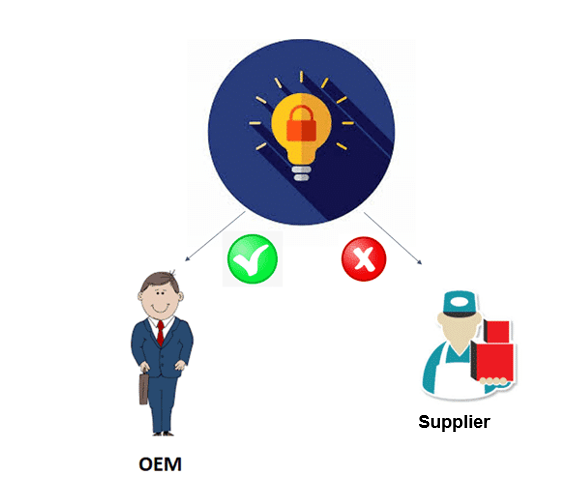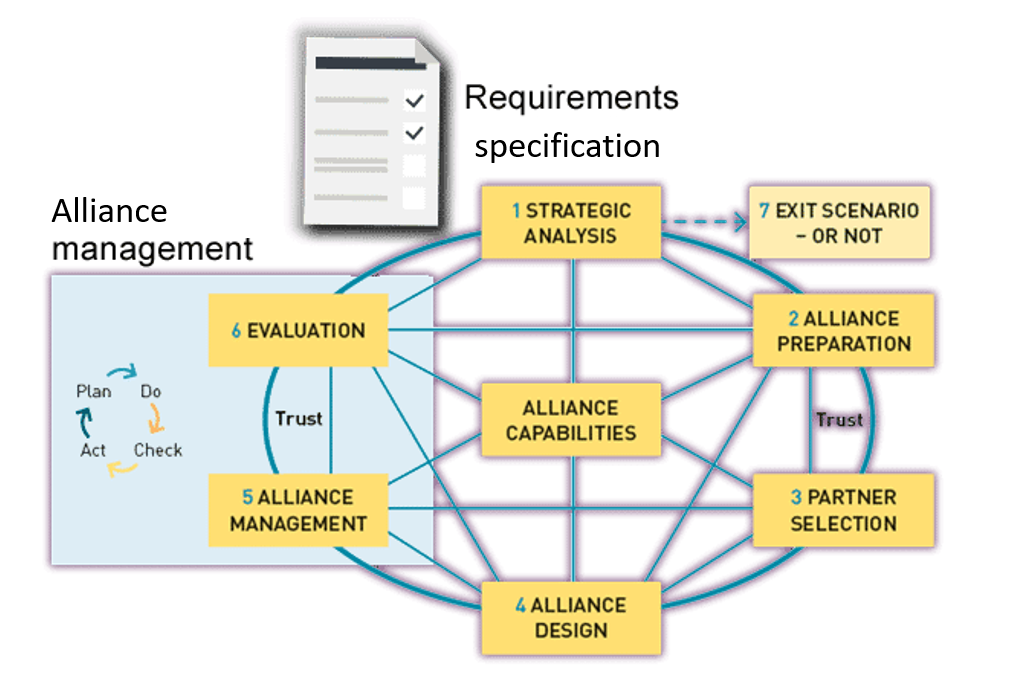Challenges
Risks
Because in this model the full responsibility for development, production and life-cycle management is outsourced, dependence on the supplier increases. On the other hand, it makes it easier to clearly define responsibilities and this model applies to products with a clearer and more stable set of requirements. Because the technical product documentation becomes the property of the OEM, it retains the freedom to change suppliers as needed.

Intellectual Property

In this model the OEM will have ownership of the paid technical product documentation (e.g. drawings and software) and all paid design documentation. Exceptions are for example standard modules (mechanical, electrical, software) which originate from a supplier’s library and for ‘source code’.
The partners will have to make agreements on any ideas worthy of a patent. In general, the OEM will not want competitors to be able to use those patents. Usage by other OEM partners of the supplier can be arranged via licensing agreements.
The right tools
The technical basis for this collaboration is a stable specification.
The partner selection tool and the Total Cost of Ownership tool can be applied when choosing and further developing a Black Box partnership. In addition, it is recommended to use alliance management tools in this model. This is about the structured implementation of the partnership. These three tools are explained in module 9 “Getting started”.

